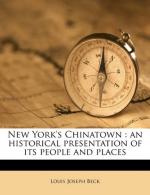|
This section contains 4,113 words (approx. 14 pages at 300 words per page) |

|
Palace Literati and the Regulated Poem. Tang emperor Taizong (ruled 626—649) had an excellent understanding of literature and was tolerant and supportive of the literati. Therefore, several groups of palace literati emerged, competing with each other to extol the great successes of the Tang dynasty (618-907). The result was the so-called palace style, which emphasized antithesis and rhetoric. Palace literati wrote in an ornate style and contributed a great deal to the poetic form known as lushi, a "regulated," eight-line poem written in couplets. Each of its eight lines has five or seven characters. In a couplet each character in the oddnumbered line should be antithetical to the character in the same position in the even-numbered line, both in tone and meaning, The last characters in each couplet should rhyme in a soft tone, and there are also rules governing the rhyming of the other...
|
This section contains 4,113 words (approx. 14 pages at 300 words per page) |

|




